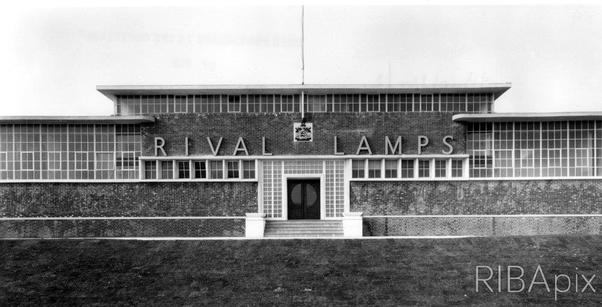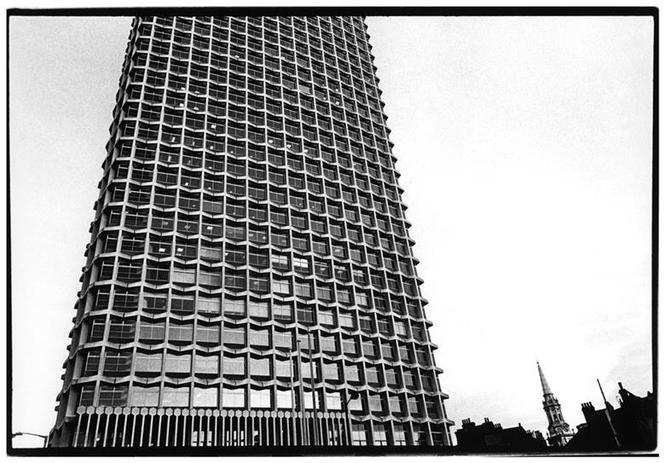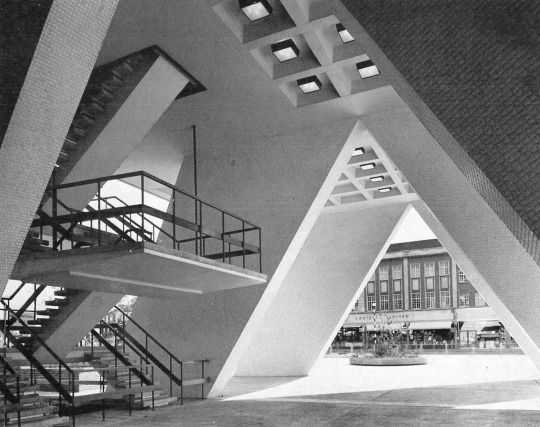|
The name Richard Seifert has become synonymous with the commercial tower blocks of the 1960s and 70s that his practice built so many of in London and throughout the UK. Buildings like Tower 42, the NLA Tower and of course Centre Point are prime examples of Seifert’s projects; towering concrete high rises, often planted on small plots that been bomb damaged in World War 2. Of course, the practice produced many other building types, with houses, railway stations, hotels and hospitals all built by Seifert. Richard Seifert was born in Zurich on 25th November 1910. His family moved to Britain when Seifer tas young, and he would enrol in the Bartlett School of Architecture in 1927, graduating in 1933. Seifert set up his own practice in the 1930’s, and served with the Royal Engineers during World War 2, achieving the rank of Colonel. He resumed his practice after the war, designing a number of buildings in a slightly out of date art deco style including a synagogue in Tottenham, a cinema in Paddington, a factory for Rival Lamps in Brighton and flats in Chiswick. It was at the start of the 1960s that his practices designs began to come to attention, with speculative tower blocks such as Tolworth House in Kingston and Space House in Holborn. These buildings were designed by George Marsh, one of Seifert's partners, and his use of concrete, often in precast units, chimed with the contemporary style of brutalism. Seifert and Partners designs were not the raw Breton Brut of others like The Smithsons, but a more commercially palatable use of concrete that allowed buildings to be constructed quickly. The most famous building associated with Seifert is Centre Point at the junction of Tottenham Court Road and Oxford Street in London. Again designed by George Marsh, this 36 storey block built for developer Harry Hyams was famously left empty for 15 years as Hyams insisted on a single tenant leasing the whole building. Centre Point was Grade II listed in 1995, with Space House also being listed in 2014 (along with Alpha Tower in Birmingham). His practice would design over 500 office blocks all over the UK before his retirement in 1984. Buildings like the Natwest Tower, the tallest building in Britain when completed in 1981, would reach higher and higher, with ever more complicated engineering requirements and ever longer planning battles. However, his practice could design at the other end of the scale as well. Angel Cottages in Mill Hill, North London are a group of four houses in brick and weather boarding, overlooking a pond. Mill Hill was Seifert's home, where he bought a semi detached house and extended it as well as building a house for his daughter in the grounds. Seifert's reputation, which had suffered in the 1980s, came around in the 1990s with the listing of Centre Point, and continues to celebrated with the renewed interest in post war buildings. Unfortunately many of his buildings are now being demolished to make way for a new wave of commercial tower blocks, and the campaigners who once fought against designs are now trying to save them.
A Guide to Modernism in Metro-Land, our guidebook to help you discover the suburbs best art deco, modernist & brutalist buildings is crowdfunding now. Go HERE to get your copy.
1 Comment
Concrete & Commerce is an online platform that connects all the people who have something to do with construction projects, real estate and related services. It's a reliable source of information, so if you are prepared to launch your own business in these sectors, then you should be here.
Reply
Leave a Reply. |
Archives
May 2024
Categories |




 RSS Feed
RSS Feed